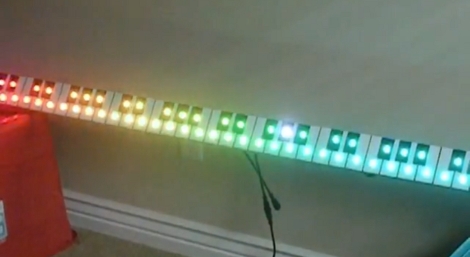

__ __ __ ___ / // /__ _____/ /__ ___ _ / _ \___ ___ __ / _ / _ `/ __/ '_/ / _ `/ / // / _ `/ // / /_//_/\_,_/\__/_/\_\ \_,_/ /____/\_,_/\_, / retro edition /___/Now optimized for embedded devices!!
| About | Successes | Retrocomputing guide | Email Hackaday |

[Carnivore] tried to break as many (unofficial) records as possible when he modified his Apad/M002 into what he calls Project Apex. Record number 1: [Derek] claims this is the first Apad mod, ever. Record number 2: 8500mAh battery, giving the device a 12 hour life which is longer than any other Android slate. Record number 3: beautiful factory-looking finish. Okay, so that last one isn’t really a record, but we thought Project Apex deserved it anyway. There are a few other modifications done to the device as well; click the link or catch a video of him showing off the slate after the jump.
[Thanks Derek Hughes]

Reader [Tim Upthegrove] sent in a novel take on powering and monitoring AC outlets and devices called SPRIME, or Simple Powerline Remote Interactive Monitor and Enforcer. Compared to previous hacks, such as 120v switching or Quick cheap remote outlets, that only turned an outlet on or off; SPRIME allows not only control over outlets via the internet, but also power usage of devices currently plugged in.
We really liked their idea of giving power companies access to SPRIME outlets to reduce power consumption during peak hours, but sadly we don’t see it being implemented in homes any time soon. Catch a video of SPRIME after the rift.
[Thanks Chris McClanahan and Jeff Starker for the project, and deyjavont for pointing out our silly mistakes]

[Dave] just can’t seem to get enough of modifying his new car. Where he lives, it’s typically dark on his ride home from work and he finds himself dropping things on the floor of his car all too often. Nissan decided not to include lighting in the Juke’s foot well or glove box, so [Dave] decided that he needed to rectify the situation.
As you might have noticed by his previous tinkering, [Dave] is a big fan of LEDs and ATTiny microcontrollers. He added some Lego-supported LEDs to the driver and passenger side foot wells, installing an additional light in the glove box while he was at it.
The Juke had a couple of usable blank spots on the dashboard, so [Dave] installed a pair of capacitive touch sensors and a small switch into one of the open slots. When touched, the top-most capacitive pin pair ramps up the foot well lights, while the lower pair turns on the LEDs in the glove box. The switch at the bottom is used to toggle on a light in the back seat which he installed a while back.
It’s a simple addition, but it makes all the difference when he is hunting around on the floor in the dark. We are a bit surprised by how many amenities are missing from the Juke, but tweaking them to his liking seems to keep [Dave] happily occupied.
Continue reading to see a short demo video of his interior lights in action.

This keyboard display has an RGB LED for each key that is addressable through the common stage lighting protocol, DMX. The project video, seen after the break, does a good job of walking us through the concept. By using a MIDI to DMX converter box [John] can show MIDI signals coming from a keyboard on the appropriate key of the display. By further monkeying with the firmware in the converter box he shows a plasma effect on the whole keyboard, making the corresponding light for each pressed key pop out in bright white. Jump to about 3:45 to hear and see “Sweet Child o’ Mine”.
This isn’t the first time [John's] been caught with a slew of blinking lights. He helped create the giant LED Christmas tree that brightened up our holiday.

Who wouldn’t want to install this little bot as your newest pencil holder? Place a pencil tip-down and it will keep it from falling using two motors. There is a Dynamic Vision Sensor for each axis that provides feedback, but it’s not the same as using a camera. These sensors pick up changes in pixel contrast, outputting a positive or negative number based on the direction the pencil is beginning to fall. An NXP2103 running at 64 MHz reads in the values and drives the pair of servo motors accordingly.
If you’re interested in the nitty-gritty the full paper is available from the page linked above. It goes into great detail about the algorithm used, and includes plots and histograms showing the data capture during a balancing session. Or you can skip the eggheaded exercises and watch the video after the break.
[via ycombinator]